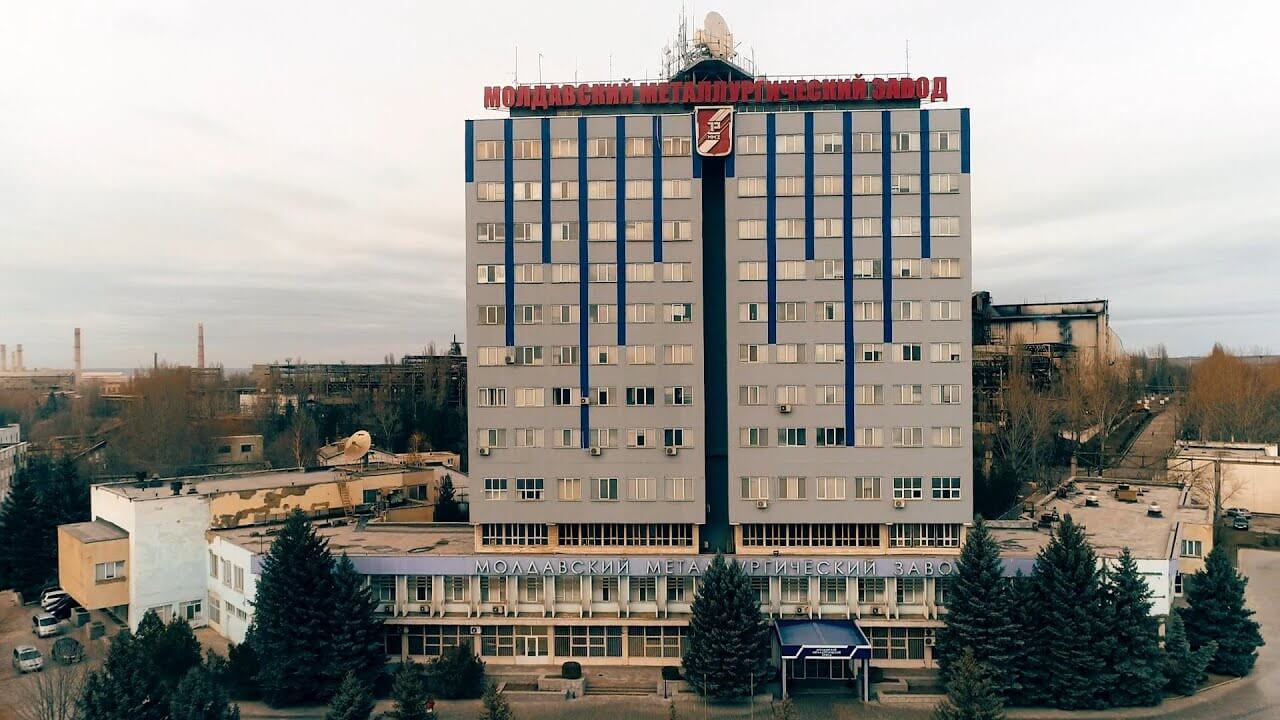
An investigation by Mădălin Necșuțu and Ilie Gulca
Russia owns the most important strategic gas and electricity supply facilities in the Republic of Moldova and uses them skillfully to put not only economic but also political pressure on Chisinau’s key decisions. The Russian Federation exercises its leverage of economic influence over Chisinau’s policy through a triangle of strategic assets consisting of Moldovagaz (owned by Gazprom), the Moldovan Metallurgical Plant (MMZ, owned by the Moscow-controlled separatist regime), and the Moldovan Thermal Power Plant (Moldgres - owned by the Russian company Inter RAO).
Moreover, Gazprom supplies gas to the Transnistrian region at low prices and even the money obtained from that adds to Tiraspol’s budget. However, the accumulated debt is carried by the government in Chisinau and has reached, so far, the amount of 8.5 billion dollars.
Thus, the scheme devised by Moscow supports the separatist regime in Tiraspol and offers the Kremlin an instrument to pressure Chisinau for the debts accumulated by Transnistria.
The circuit of Russian gas from Gazprom to the Transnistrian industry. Photo: Ilie Gulca, Mădălin Necșuțu
How Gazprom got to hold a gas monopoly in Moldova
Moldovagaz has a monopoly on gas supplies from the Russian Federation throughout the Republic of Moldova, including Transnistria.
The company was founded in 1998 by converting part of the Republic of Moldova’s debts to the Russian giant. Gazprom also took over the entire pipeline infrastructure of the Republic of Moldova, including the segment controlled by the self-proclaimed Transnistrian authorities.
The shareholding structure of SA Moldovagaz looks like this: Gazprom - 50%, the Public Property Agency of the Republic of Moldova - 35.33%, and the Property Management Committee of Transnistria (related to the separatist regime) - 13.44%. Subsequently, the latter shares were transferred to the management of the Russian gas supplier. The other 1.23% of the company's shares are owned by natural persons.
After the 1992 Dniester War, the secessionist regime in Tiraspol proclaimed itself the owner of the gas distribution network in the territory of the separatist enclave, which a year later it passed on to the local company Tiraspoltransgaz.
In 2005, all the Tiraspoltransgaz assets were taken over by a newly-formed entity - Tiraspoltransgaz-Pridnestrovie.
Although Tiraspoltransgaz declared itself a separate entity from Moldovagaz in 2006, it continues to procure gas from Gazprom for both the right and the left banks of the Dniester.
While Moldovagaz pays Gazprom for gas consumption on the right bank of the Dniestr, the money collected from Transnistria does not end up in Gazprom’s pockets, but in Transnistria’s annual budget. As a result, Moldovagaz currenly has a debt of more than 8.5 million dollars to Gazprom and its subsidiary, Factoring Finance. More than 90% of this debt is Transnistria’s.
Between 2007 and 2011, Moldovagaz delivered gas to Tiraspoltransgaz under a contract signed with Gazprom in 2006. This contract was renewed annually until 2019 and extended in October 2021 until 2026.
In parallel, in 2011, the second contract between Moldovagaz and Tiraspoltransgaz was signed, stipulating the conditions for the delivery of Russian gas to Transnistria.
According to the contract between Moldovagaz and Gazprom, extended on October 29, 2021, the Russian giant undertook to annually supply the Republic of Moldova with 3.3 billion cubic meters, for a period of five years. Of this amount, every year, 1.24 billion cubic meters go to the right bank of the Dniester and another 2.06 billion are used for consumption on the left bank.
Thus, about two-thirds of the gas delivered to Moldova by Gazprom reache Tiraspoltransgaz, which in turn distributes it to Transnistrian companies. The accumulated debts for gas consumption on the left bank of the Dniester belong only to Tiraspoltransgaz, Moldovagaz director Vadim Ceban told Veridica.
“We can only say one thing, these debts belong to those who accumulated them - Tiraspoltransgaz. The debts are reflected in the so-called off-balance sheet accounts”, said Ceban, stressing that the gas supply in Transnistria is regulated by a contract signed in October 2021.
Moldgres, the main strategic asset that feeds on Russian gas
The Moldovan Thermal Power Plant is the largest gas consumer in Transnistria.
During the USSR, this enterprise was designed to produce electricity at regional capacity for the Republic of Moldova, Ukraine, Bulgaria and Romania.
With an installed capacity of 2,520 MWh, the plant provides electricity for both banks of the Dniester, both in the territory controlled by the constitutional authorities of the Republic of Moldova and in the Transnistrian separatist region.

- Moldgres. Photo: novostipmr.com
In July 2008, the Russian energy giant Inter RAO UES acquired 100% of the Moldgres shares from the separatist regime in Tiraspol. The transaction was not recognized by the constitutional authorities in Chisinau, as it should have been approved by the competent institutons of the Republic of Moldova. The enterprise is vital for the survival of the separatist regime in Tiraspol and for Russia’s political influence over Chisinau.
The Chisinau authorities are currently buying 70% of Moldgres' electricity, which is owned by Russia's parent company Inter RAO, and the remaining 30% is provided by the Ukrainian company Energoatom. Until April 2022, the Republic of Moldova procured its electricity almost entirely from Moldgres.
Moldgres is currently refusing to sign a long-term contract for the supply of electricity to Chisinau. The current contract is renewed every month.
The Tiraspol regime, loyal to Moscow, makes the supply of electricity from Moldgres conditional on the issuance of monthly environmental certificates from Chisinau, necessary for the operation of the Râbnița Metallurgical Plant according to the standards requested by the EU.
According to a report by the Ministry of Economic Development in Tiraspol, in 2021, the company provided electricity on the right bank of the Dniester worth 176.7 million US dollars.
Tiraspol's problem is that the Chisinau authorities pay for their electricity consumption in Moldovan lei and thus deprive the separatist regime of foreign currency.
On the other hand, Chisinau also needs a relationship with Moldgres: electricity in Transnistria is offered at a dumped price, with which no regional producer can compete.
Although Tiraspoltransgaz does not indicate on its website the price of gas for Moldgres, sources who wanted to remain anonimous say that it’s about 1,700 Transnistrian rubles for one thousand cubic meters, the equivalent of 100 USD.
According to a document published by the Moldstreet.md portal, Moldgres consumes about 125 million cubic meters of gas per month. Therefore, the plant burns about 1.5 billion cubic meters of gas annually, which is about 75% of the total gas that reaches Transnistria. The remaining 25% is distributed to other targets in Transnistria.
For example, for the Electricity Distribution Networks (ERES) on the left bank of the Dniester, Moldgres burns 26.2 million cubic meters of gas every month, for the Metallurgical Plant in Râbnița - 12 million cubic meters, and for the company Tehnopark, which sells electricity for crytpocurrency mining farms - 4.5 million cubic meters.
At first glance, some of these companies have nothing in common with gas consumption.
However, a document on the banking operations of Moldgres in 2015–2017, which came into the possession of Veridica, shows that this company provides monthly “gas processing services for electricity generation” to the Moldavian Metallurgical Plant in Râbnița.
Tiraspoltransgaz therefore supplies gas to those undertakings. In turn, they supply gas to Moldgres and pay this company only for its conversion into electricity.
Gas to electricity circuit. Photo: Ilie Gulca, Mădălin Necșuțu
Moldgres pays Tiraspoltransgaz-Pridnestrovie for gas, and the latter transfers the money to a special gas account opened with the Central Bank of Transnistria.
The money from the special gas account opened in this bank is then paid into the budget of the separatist regime in Tiraspol.
In keeping with the Law on Region’s Budget for 2022, revenues account for 3.4 billion Transnistrian rubles, expenditure : 5.9 billion and the deficit stands at 2.5 billion (some 125 million Euro).
According to Article 5 of the budget law, which is secret, the sources used to cover the Transnistrian deficit are “loans” from various companies in the region.
A 2014 document obtained by Veridica shows that, between 2006 and 2014, the separatist government had accumulated a debt of over 8 billion Transnistrian rubles - about 400 million euros - to Tiraspoltransgaz.
Transnistria's debt. Photo: Veridica/Ilie Gulca, Mădălin Necșuțu
According to energy expert Sergiu Tofilat, who analyzed the budget execution reports of the Transnistrian region, 53% of expenditures in 2019 and 40% in 2020 were financed from the special gas account of the Central Bank in Tiraspol.
Râbnița Metallurgical Plant – a currency collector for Tiraspol with raw material from Romania
One of the largest contributors to the Transnistrian separatist region's budget is the Moldovan Metallurgical Plant (MMZ). The miracle of the operation of this plant is that it works on the gas received from Tiraspoltransgaz-Pridnestrovie , which it further sends to Moldgres for the production of electricity.
According to the tariffs published on its website, Tiraspoltransgaz sells one thousand cubic meters of gas to MMZ for 1,500 Transnistiral rubles , the equivalent of some 94 dollars, while the price of the gas purchased by Moldovagaz from Gazprom has fluctuated since October 2021 from 350 dollars to almost 1,000 dollars today, according to a price formula established between the two parties.
The main mission of the plant is to infuse foreign currency capital through products sold on European markets due to the benefits of the Association and Free Trade Agreement signed by the Republic of Moldova and the European Union (DCFTA) in June 2014, which also covers Transnistria.
According to a report by the Tiraspol Ministry of Economic Development, at the end of 2021, MMZ sales reached 432.2 million US dollars, accounting for almost half of the total value of the separatist region's exports.

Râbnița Metallurgical Plant. Photo: novostipmr.com
The plant was part of a group of companies owned by the oligarch close to the Kremlin Alisher Usmanov, which appears on the list of international sanctions imposed on Russia after the invasion of Ukraine.
Usmanov was a shareholder in the company from 2004 until February 2015, when he handed over the plant to the Tiraspol Ministry of Economic Development, invoking the lack of raw materials on the market.
Usmanov's leaving the shareholders’ group coincides with the start of an investigation by the Ukrainian authorities into metallurgical products originating in Belarus and Transnistria. Until then, the plant was umbilically linked to imports of scrap metal and exports of finished metallurgical products to Ukraine.
According to the documents obtained by Veridica, on April 15, 2019, the company's statutory capital was reduced from 112.8 million dollars to only 32.9 million due to the lack of raw materials.
On 12 June 2019, the Ukrainian authorities adopted a decision on the application of definitive anti-dumping measures to imports into Ukraine of carbon steel bars and other alloy steels originating in Belarus and the Republic of Moldova (Transnistria).
The plant was saved from total collapse by the imports of scrap metal from Romania . Following the sanctions imposed by Ukraine, the Moldovan Metallurgical Plant was forced to find another region to get raw materials and other markets to sell its products.
Taking advantage of the Free Trade Agreement between the Republic of Moldova and the EU, the Moldovan Metallurgical Plant started to buy raw materials from Romania and to sell its products in the EU countries.
Of these, Romania is the main source of raw materials for the Moldovan Metallurgical Plant in Râbnița. Scrap metal imported from Romania into the Transnistrian separatist region of the Republic of Moldova allows this steel company on the left bank of the Dniester to stay afloat.
Moldova has no simple solutions to get out of the Russian energy trap
The circuit of money flowing towards the Tiraspol separatist regime. Photo: Ilie Gulca, Mădălin Necșuțu
The director of Moldovagaz, Vadim Ceban, has stated that the issue of the debts accumulated by Tiraspoltransgaz can only be solved by the shareholders.
“Shareholders need to discuss how this company will be managed further, what will be the fate of these relations [between Moldovagaz and Tiraspoltransgaz - n.a.]”, he said, adding that an intergovernmental [Moldovan-Russian] agreement was proposed in October 2021 for the management of energy issues.
“And this is not just about natural gas, it also concerns electricity”, Ceban said.
Energy expert Ion Muntean says that there could be two scenarios for Tiraspoltransgaz.
“An optimistic scenario would be for these relations to be limited to Gazprom and Tiraspoltransgaz. The Transnistrian company could pay its debts with assets, only that its properties and all the gas infrastructure on the left bank of the Dniester are not valuable enough to cover these debts”, he said.
“In the worst case scenario, these debts would be recovered from Moldovagaz, which has official relations with Gazprom. There is every precondition for this dispute to be settled in an international arbitration tribunal, which would clarify these heinous debts that have been knowingly accumulated by favoring the interests of certain parties to the contract. This case is similar to the dispute between Ukraine and Gazprom, lost by the latter”, added Muntean.

Artboard: Veridica/Iulian Preda
In turn, the political analyst of the IDIS Viitorul think-tank, Igor Munteanu, has told Veridica that Russia has absolute control over the energy industry in the Republic of Moldova.
“The Russian Federation supports the energy industry. The entire energy system of the Republic of Moldova is under the effective control of the Russian company Inter RAO ES through the Moldgres power plant in Transnistria, which takes care of the electricity part, and through Gazprom, which holds the majority stake in Moldovagaz. Under these conditions, the Republic of Moldova is severely confined and has no room for maneuver to control its territory”, Munteanu concluded.


